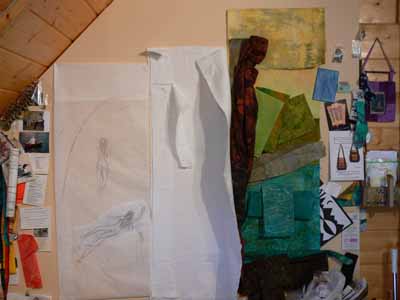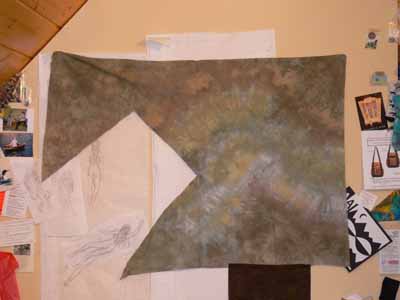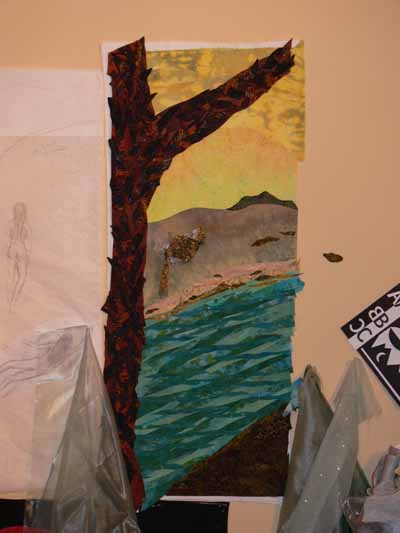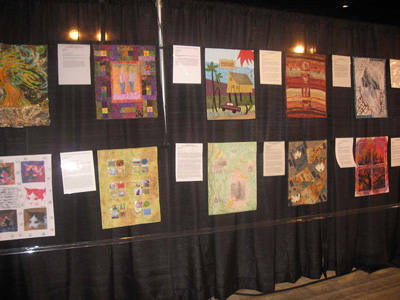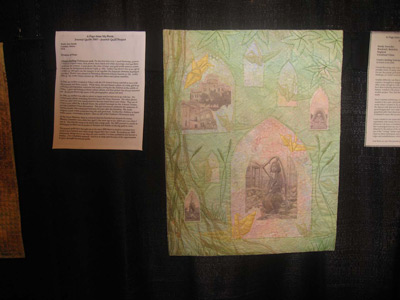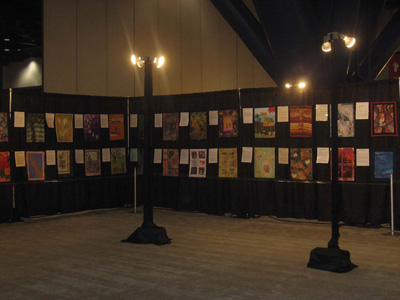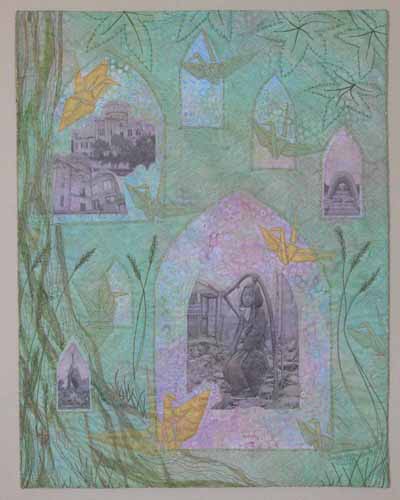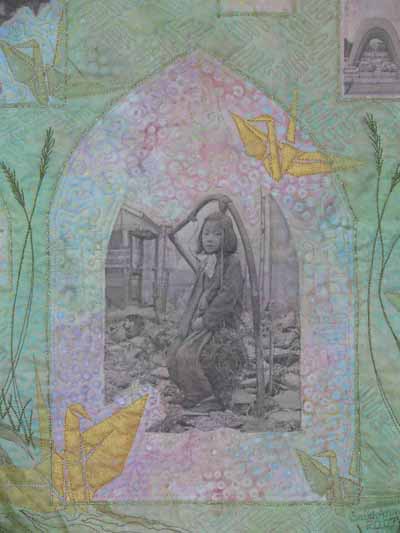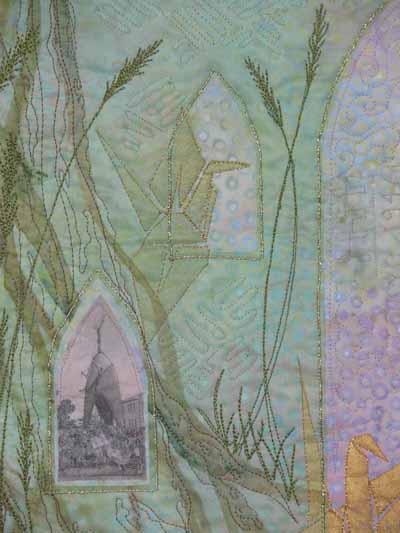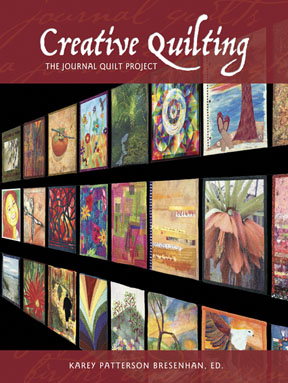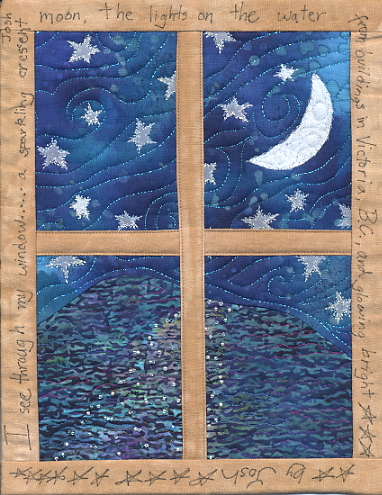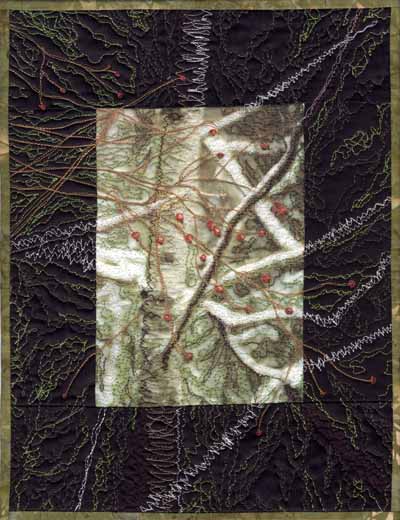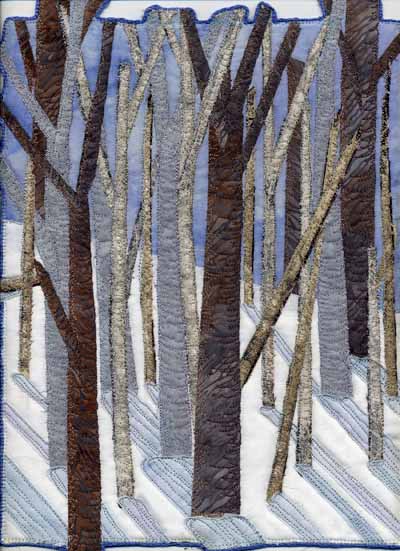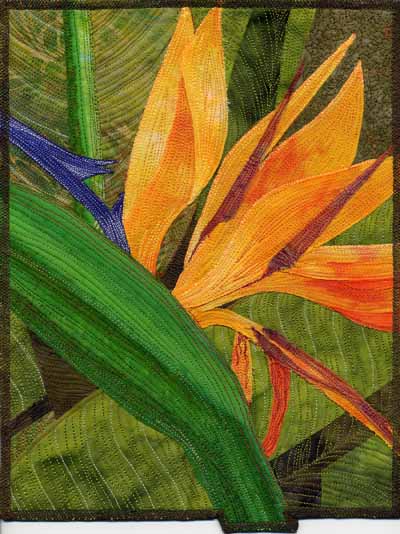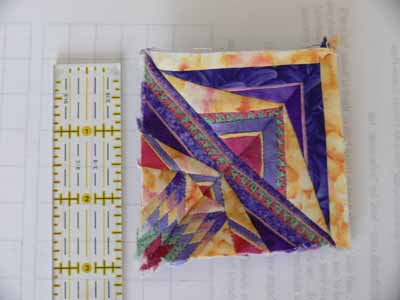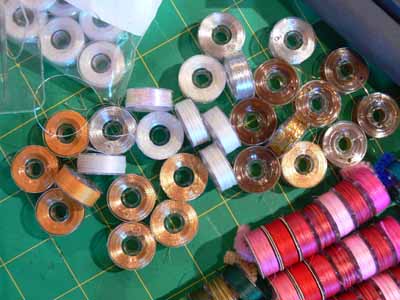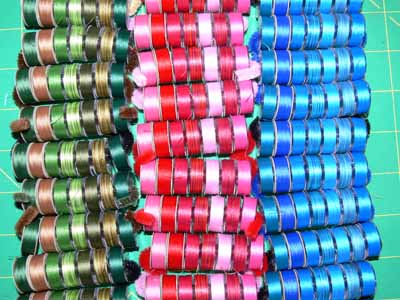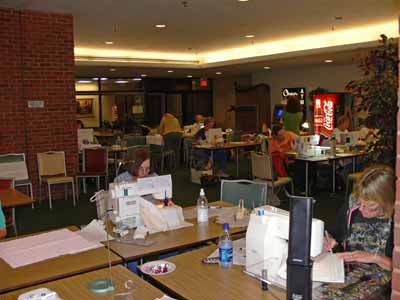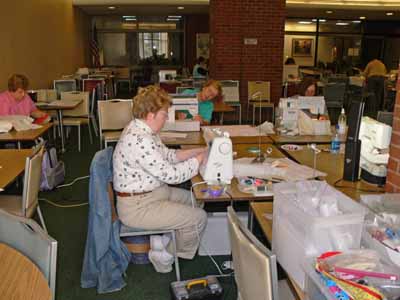It’s Good to be Green….
Wednesday, November 21st, 2007A bit over a year ago, I was dumbfounded and elated when Larkin Van Horn invited me to participte in an art quilt show she is curating to be titled “It’s Good to be Green.” All quilts are to be 18×45 inches, and please, no Kermit the frogs, she said. Almost instantly I had an idea to do a quilt about the water spirits that inhabit the streams and lakes. My first thought was the ruselka from Russian mythology, but after doing a bit of research, learned they aren’t such nice creatures, so I amended that to Naiads.
The show will open in March (In Tillamook, Oregon, I think), and we’ve been asked not to share the finished products until after the show opens. Best of all, Larkin will be producing a CD catalog of the show so you can all go see it, even if just “virtually.” However, Larkin did say it would be OK to share pictures of in progress, so here you go. This first picture is of a very rough sketch for the overall piece (the left white paper—use medical exam table paper!), some sketches for the naiads, batting cut a bit larger than finished size in the center with an extra bit of batting on the left for the tree, and on the right, possible fabrics for the background:
It’s kind of interesting since I initially thought the entire quilt would be green…green ladies (remember the “green naked ladies” from my Tree Spirits 2 quilt?), green hair, green water, green sky. But after having made Windows of Hope for my Journal quilt this year, I felt the need to add color! I also decided not to crop out the sides of my design wall…I’m always curious bout other people’s studios, so thought this would be “honesty in blogging”…teeheee… lots of stuff gets stuck up there!
A while ago, artist and art quilter Thelma Smith surprised me with a box of manna from heaven, aka hand-dyed fabrics! I was so thrilled! This glorious piece had a perfect spot for the banks of the river (that’s the part that is missing), but before I cut it further, I wanted to take a photo. Isn’t this a glorious piece of cloth? Thanks Thelma!!!!!
I got the background together, fused to the batting; the stuff pinned to the lower right and left are sheers that will go on top of the water, which is made from the fabrics I worked on during the dye workshop with Carol Soderlund (check my blog entries for October 2007):
I’ll post about the naiad figures in my next entry on this piece….

